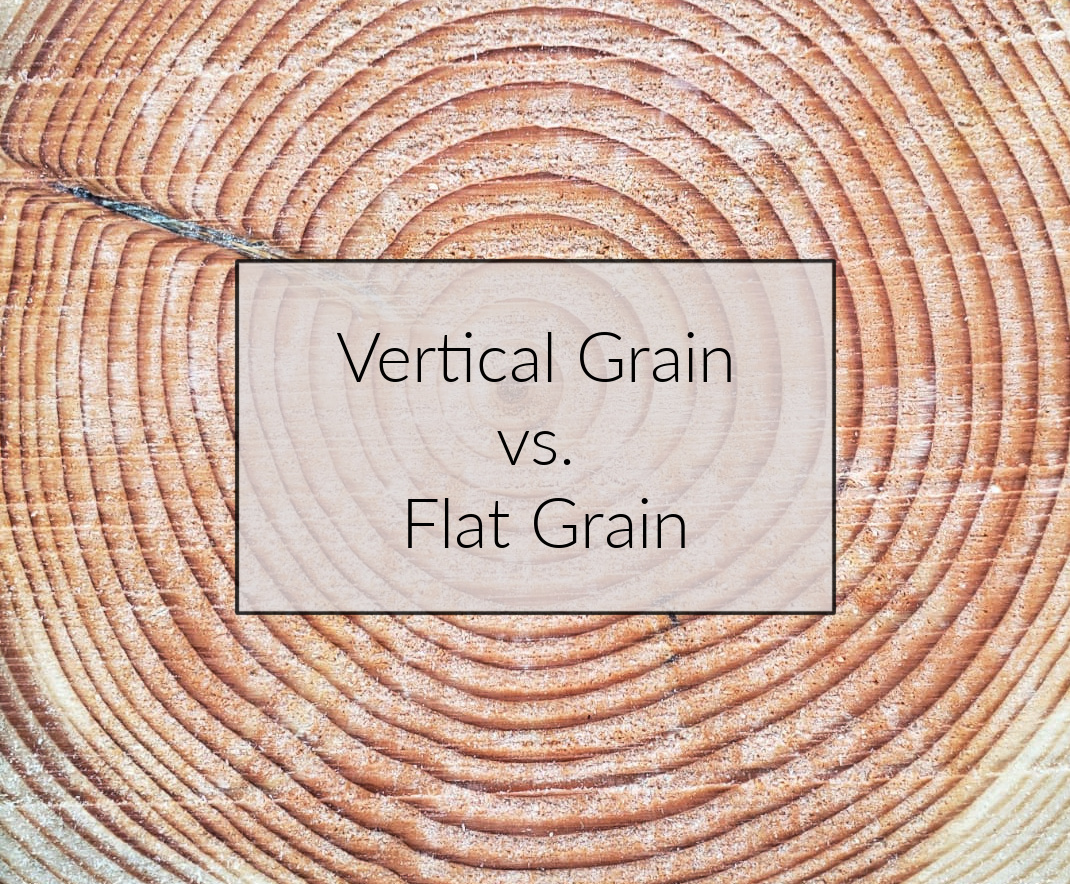
Welcome to the first post of the Lumber 101 series! This is the start of a small series of educational posts to share some of our knowledge about lumber. Today’s topic is Vertical Grain vs. Flat Grain, covering how they are produced, the differences, and best uses for each.
What is Vertical Grain (VG)?
Vertical grain (edge grain, sometimes called rift cut or quarter sawn) is produced with the annual growth rings vertical to the face of the board. It takes a large log to mill VG boards – the depth of clear, knot-free wood available in each log will determine the maximum width of a piece. Since the grain is vertical within these pieces, VG boards are least likely to cup or twist as they age. Knots in VG lumber tend to be across the face, we call them “spike knots”. Vertical grain is a great option in high-end applications where the stability, durability, and appearance of the lumber is critical.
What is Flat Grain (FG)?
Flat grain lumber is milled with the annual growth rings running parallel to the face, creating a unique and prominent grain pattern on each piece. Since knots start in the center of a tree and grow outwards, any knots found in flat grain lumber generally will be round or oval shaped. This type of grain is a less expensive option because boards can be milled out of smaller logs. Typically all construction lumber is cut flat grain. Due to the structure of the grain, flat grain pieces do have potential to warp or cup – this is totally normal! Wood will naturally expand or contract as moisture content changes, in exterior applications (especially here in rainy Vancouver) this change can be quite noticeable. Generally speaking, flat grain lumber is a perfect option for most projects. It is cost-effective, maintains similar durability properties, and has more character with its visible wavy grain and round knots.
The majority of lumber available for purchase from Lumber Store is flat grain, with a small selection of Western Red Cedar and Sitka Spruce specialty vertical grain items. Click here to browse our Specialty Lumber section.